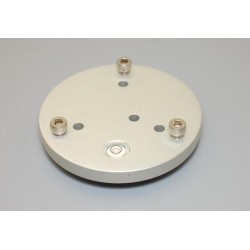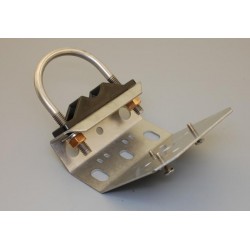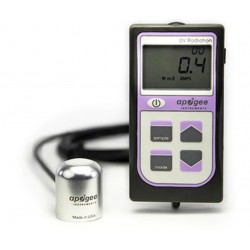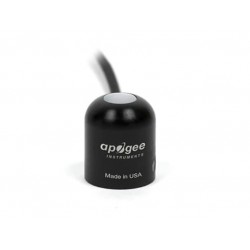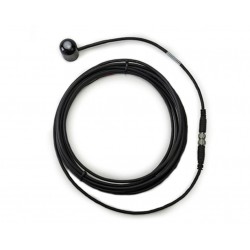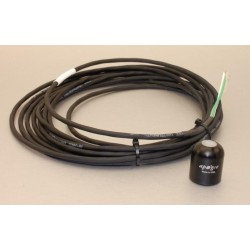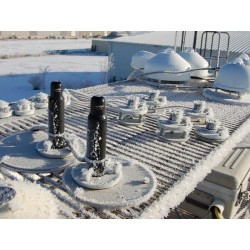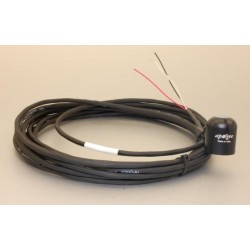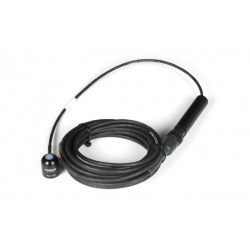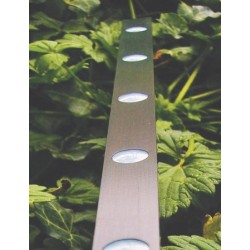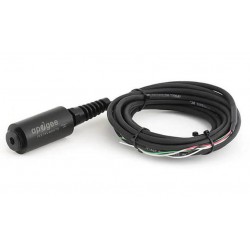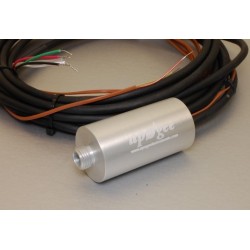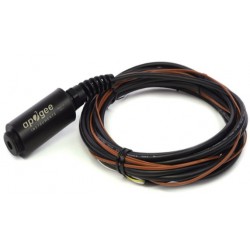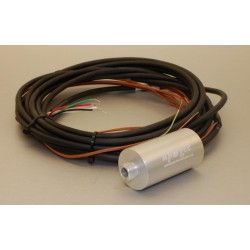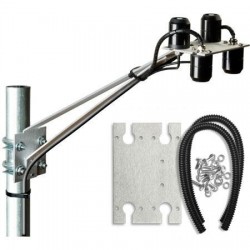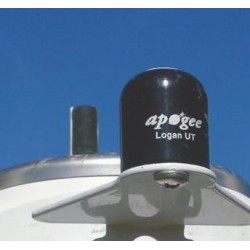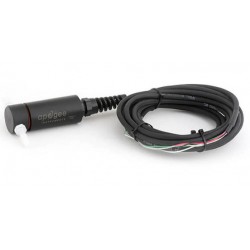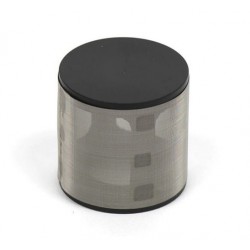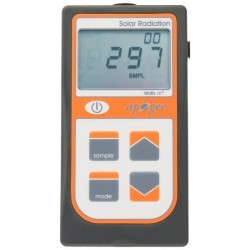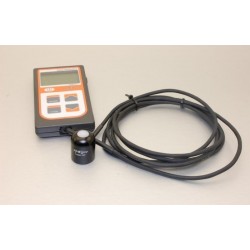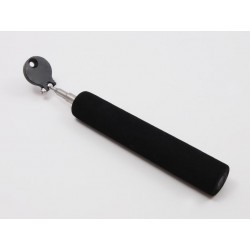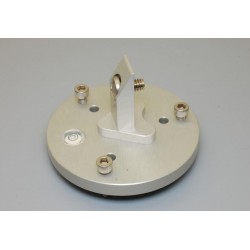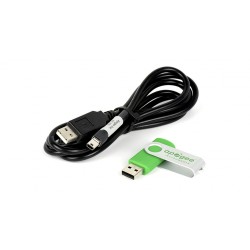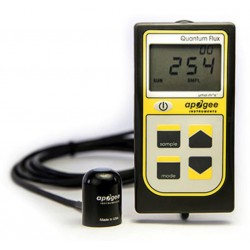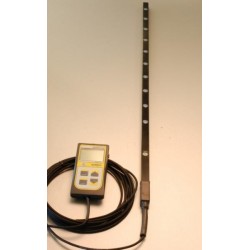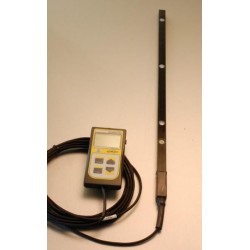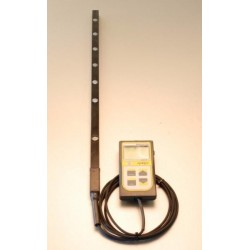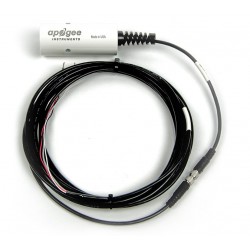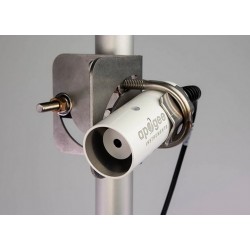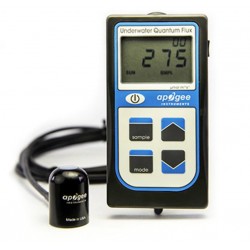Ningún producto
Estos precios se entienden sin IVA
Su producto se agregó correctamente al carro
Hay 0 productos en su carro. Hay 1 producto en su carro.
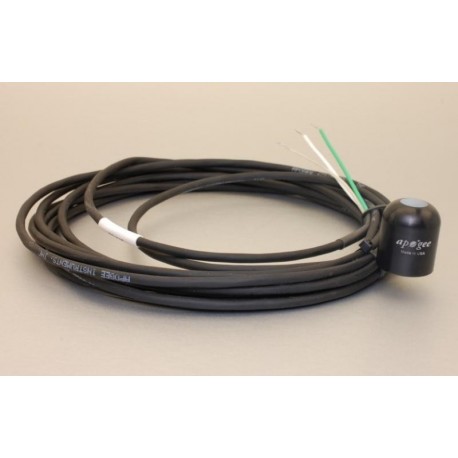 Ver más grande
Ver más grande
SQ-212 Sensor PAR Apogee calibrado para Luz Solar (Alimentación 2,5 a 24 Vdc)
SQ-212
Nuevo
¿COMPRAS POR CANTIDAD, O SOLO QUIERES INFORMACIÓN ADICIONAL?
Llama al +34 916292106 o completa nuestro formulario de Consulta este producto
- Consulta este producto
- Remove this product from my favorite's list.
- Add this product to my list of favorites.
- Imprimir
| El Sensor mide: | Luz PAR |
| Señal de Salida: | mV |
| Longitud del Cable: | 5 metros |
| Alimentación: | 2,5 a 24 Vdc |
| Sensor para uso en: | Intemperie y Bajo Agua |
Esta es la versión amplificada de nuestro sensor Quantum y viene en versiones de 2,5 y 5 voltios, que permiten aplicaciones con mayor capacidad de medida y precisión.
Este Sensor Serie SQ-212 Amplificado (requiere alimentación a 2,5 Vdc) de Luz PAR Apogee (400-700 nm) con salida en µmol m-2 s-1 con 5m de cable, tornillo para la base de nivelación, diseñado para uso con registradores de datos.
SQ-212: Calibrado para luz solar. SQ-222: Calibrado para luz eléctrica.
Conector opcional para canal externo de registradores HOBO.
La fotosíntesis es impulsada por el número de fotones entre 400 y 700 nanómetros (nm).
Esto se llama el flujo de fotones fotosintéticos (PPF) y se mide en μmol m-2 s-1 (micromoles de fotones por metro cuadrado por segundo). Los sensores PPF son comúnmente denominados sensores quantum, porque un quantum se refiere a la cantidad de energía transportada por un fotón.
También disponible Barra de sensores en linea para Luz PAR Apogee SQ-300 (400-700 nm) con salida en µmol m-2 s-1 con 5m de cable.
Los sensores de luz PAR línea a menudo se utilizan para cuantificar la la luz variable en los invernaderos y por debajo de doseles de plantas debido a que proporcionan un promedio espacial.
The SQ-212 is an amplified quantum sensor that measures photosynthetically active radiation and is calibrated for use in sunlight. The sensor housing design features a fully potted, domed-shaped head making the sensor fully weatherproof and self-cleaning. Photosynthetically active radiation (PAR), or photosynthetic photon flux (PPF), is the wavelength range from 400 to 700 nanometers and is strongly correlated with plant growth. Gardeners, greenhouse managers, growth chamber users and salt-water aquarists measure PAR to insure optimal specimen health.
Apogee Instruments Quantum / PAR Meters
Measure photosynthetically active radiation (PAR, PPF, PPFD) from the sun or electric lights in μmol m-2s-1
- Next generation design
- Built to withstand extreme conditions
- Self-cleaning dome-shaped head does not trap water or debris
- Meets strict specifications for accuracy
- Trusted and installed as a standard feature in growth chambers manufactured by industry leaders Convirion, Biochambers, Environmental Growth Chambers, and Percival Scientific
- Available in single sensor or in multi-sensor “line quantum” models that provide spatially-averaged measurements useful in settings where light is non-uniform (i.e. under plant canopies)
- Separate sunlight and electric calibrations minimize spectral errors
- Excellent cosine response
- Sensors are fully submersible
- Easily integrates with dataloggers
- Also available with handheld meter
- Custom options available
Apogee Instruments quantum sensors measure photosynthetic light levels in both air and water, combining accuracy and durability at an affordable price. The sensor heads feature a unique blue diffuser that reduces spectral error to less than 5% for sunlight (direct, diffuse, under plant canopy, reflected from plant canopy) and common electric plant lights (fluorescent, metal halide, high pressure sodium), and less than 10 % for LEDs (blue, green, red, cool white, neutral white, and warm white). You can read more about using our quantum sensors with various light sources in our Knowledge Base.
Apogee’s quantum sensors are the culmination of over 16 years of field-testing and feedback from researchers worldwide. The sensor heads are potted solid with no internal air space for use in all climate conditions. In addition, all Apogee designs are subjected to brutal accelerated aging tests to ensure reliability and precision even under the harshest of conditions.
Each Apogee quantum sensor is carefully pre-calibrated to NIST standards in carefully controlled conditions. Our stock models are ready to go out of the box and come in several configurations readily compatible with most data-loggers. Our custom options can provide maximum flexibility by offering different multipliers, outputs, and cable lengths. With Apogee, you are dealing directly with the manufacturer and we can work with you to deliver quantum sensors that fit your specific application.
For reference, a quantum refers to the amount of energy carried by a photon. Quantum meters approximate the quantity of photons between 400 and 700 nanometers. Photosynthesis is largely driven by the number of photons between these wavelengths. Photosynthetically Active Radiation (PAR) is also called the Photosynthetic Photon Flux (PPF) or Photosynthetic Photon Flux Density (PPFD) and the units are μmol m-2 s-1 (micromoles of photons per meters squared per second).


